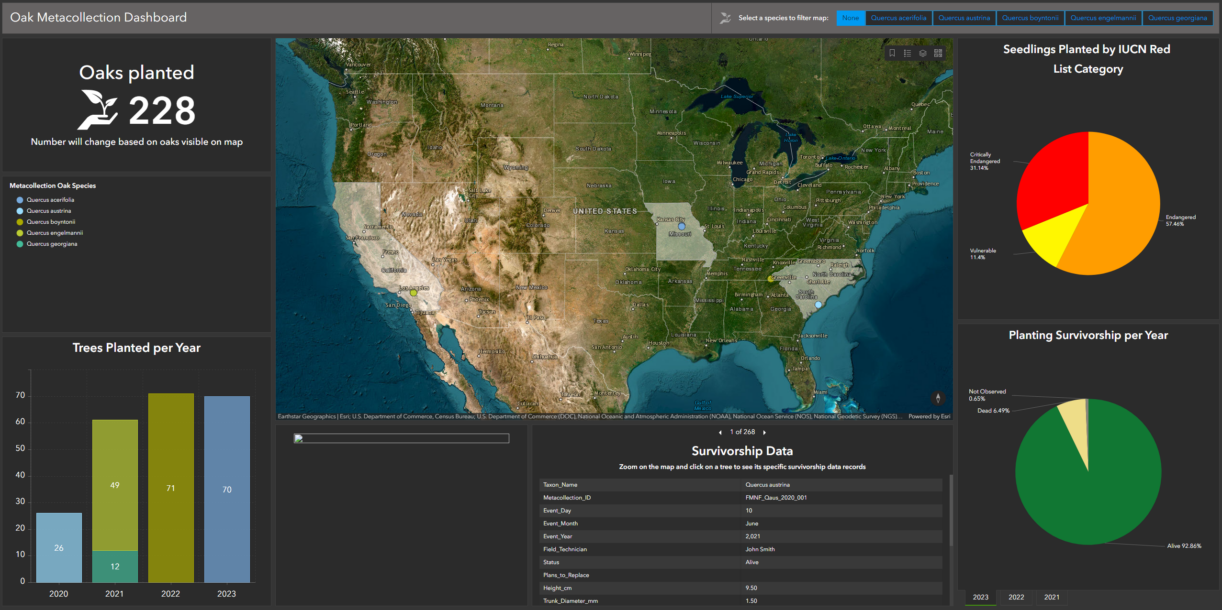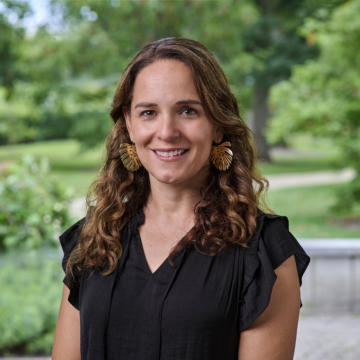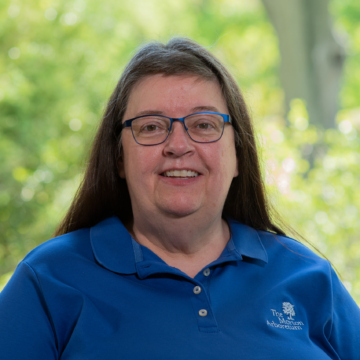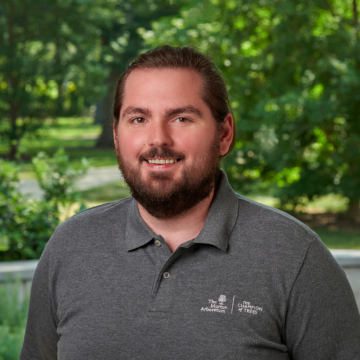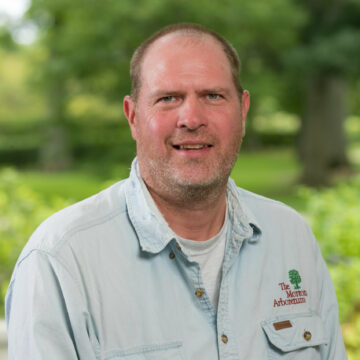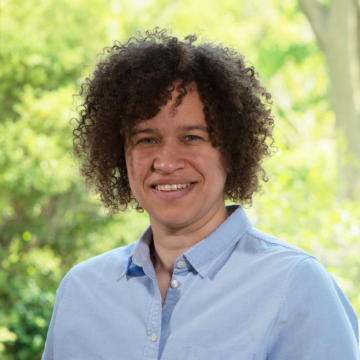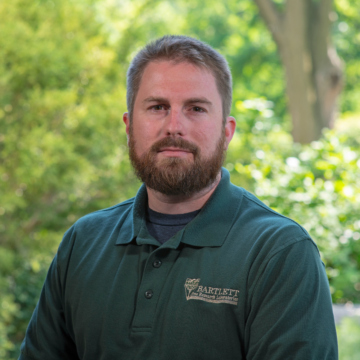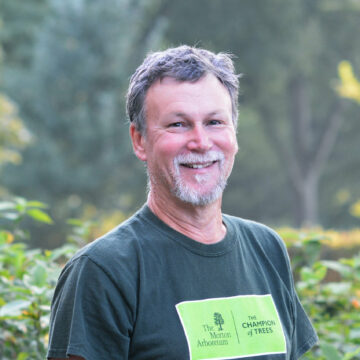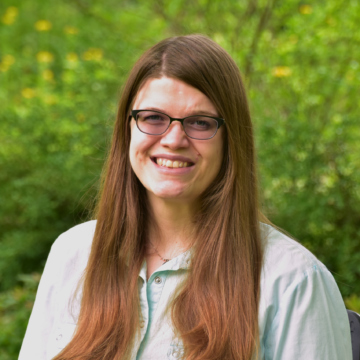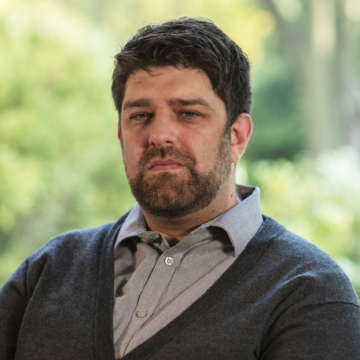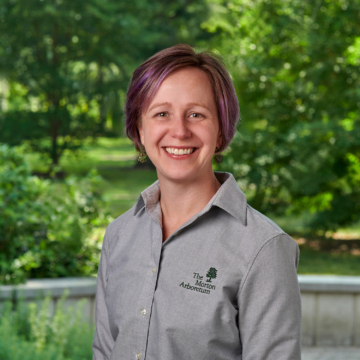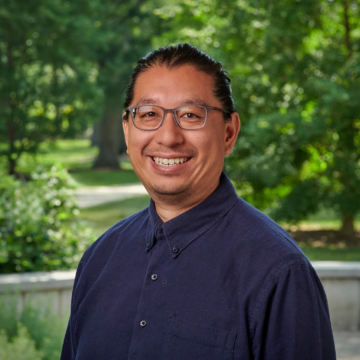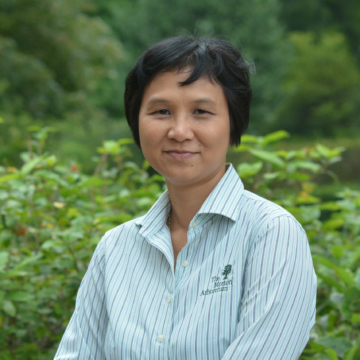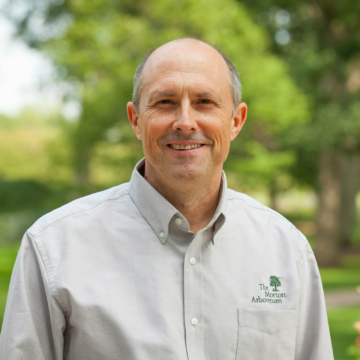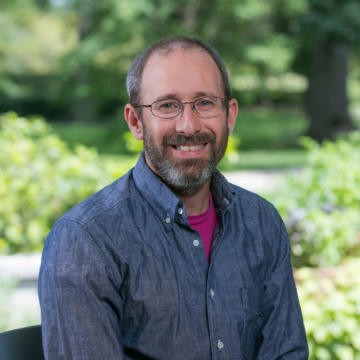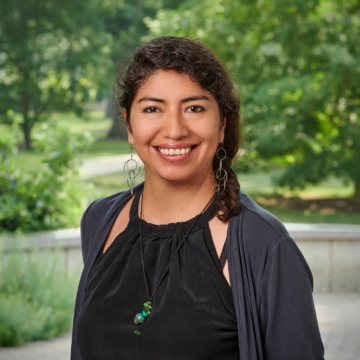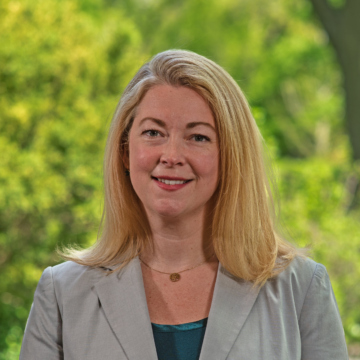Unlike many kinds of seeds, oak acorns cannot be held in a seed-bank for long-term conservation. Rare oak species must be then preserved as living trees, often in the collections of botanic gardens and arboreta. To conserve the genetic diversity of priority oak species, the Global Conservation Consortium for Oak (GCCO) coordinates living ex situ collections, known as metacollections. The Morton Arboretum’s Global Trees Conservation Program is a leading partner in the GCCO.
A metacollection is the combined holdings of a group of collections for a particular species. They are envisioned as common resources held by separate institutions but stewarded collaboratively for research and conservation purposes.
Many oak tree species are large and long-lived, so space and capacity are two factors that must be addressed to effectively grow and conserve them. Working with gardens, universities, municipalities, government land managers, provenance trial sites, living gene banks and repositories, and seed orchards is key.
In addition, the GCCO works with organizations that have the capacity to host part of the permanent national oak metacollection, such as the USDA Forest Service, tribal groups, and other public land managers.
The GCCO’s Metacollection Partnership Program pairs host site organizations with botanic garden partners that will collect and propagate the wild germplasm and work with the host site to design and plan a conservation grove where the trees can grow to maturity. The botanic garden partners will also help plant, monitor, and maintain the grove long-term.
In addition to conserving valuable wild genetic diversity, the trees in the metacollections have many other uses. They can be used for provenance testing, common garden experiments, genetic diversity studies, selective breeding, phenological studies, restoration and reforestation source material, public education and outreach, and other purposes.
In the United States, the GCCO focuses on coordinating metacollections for the species of conservation concern identified in the Conservation Gap Analysis of Native U.S. Oaks (Beckman et al., 2019).
